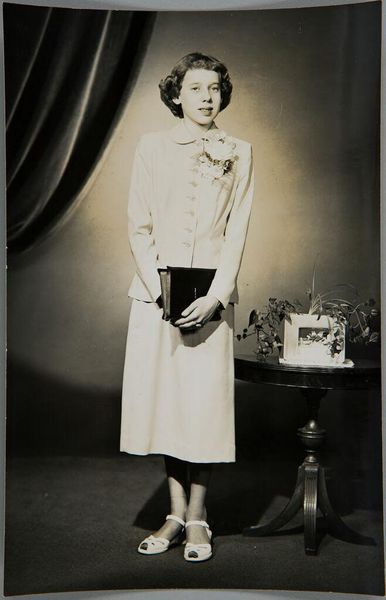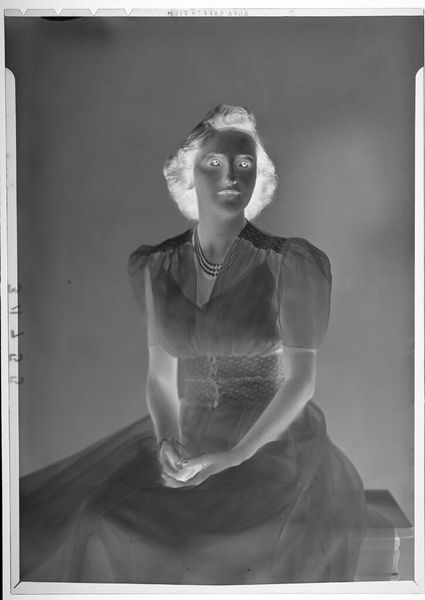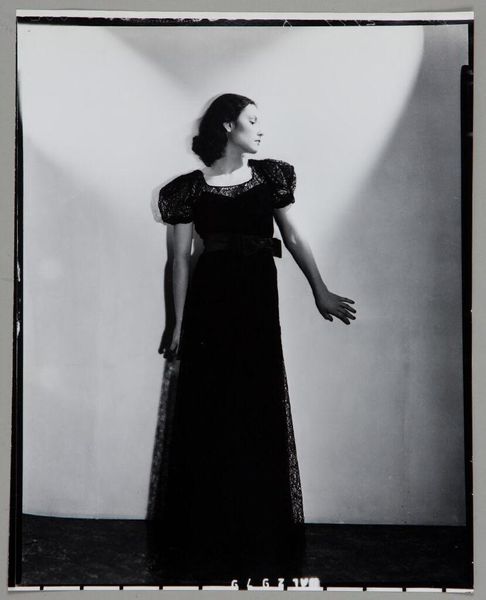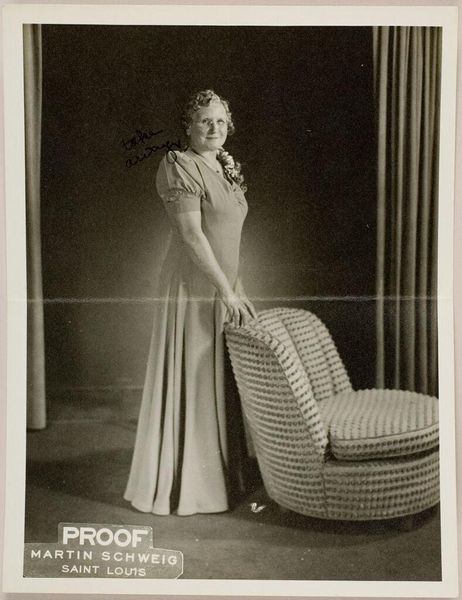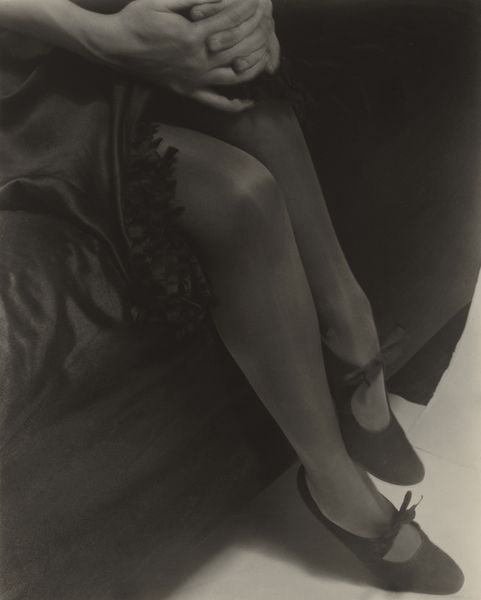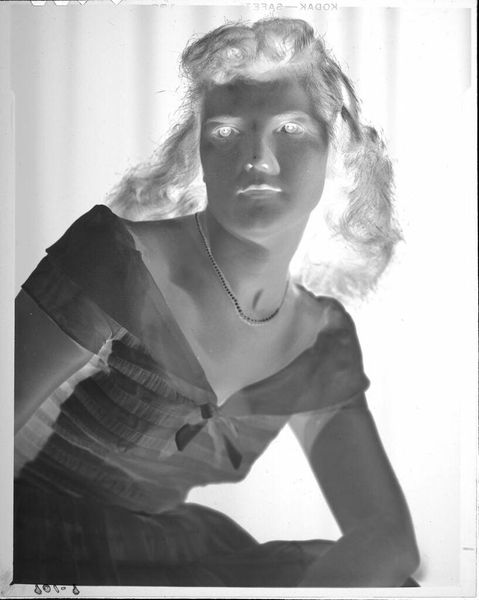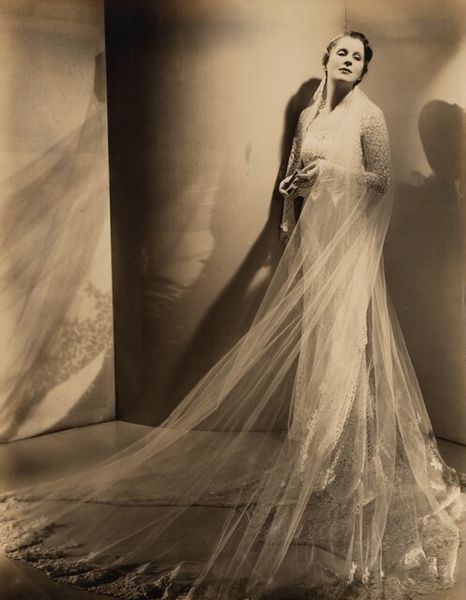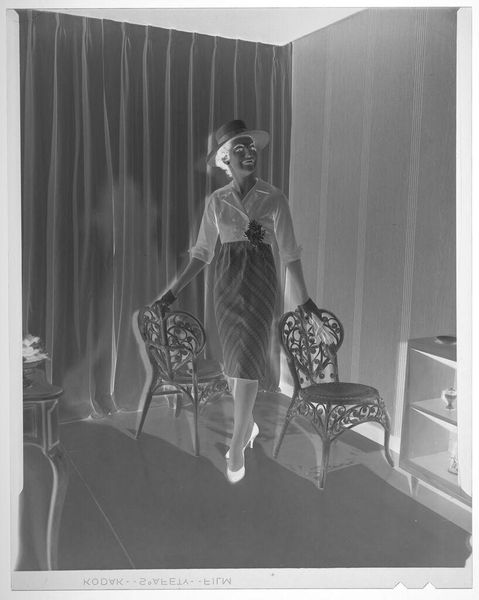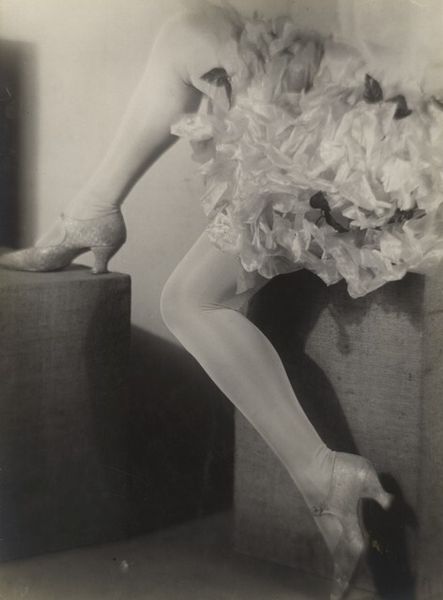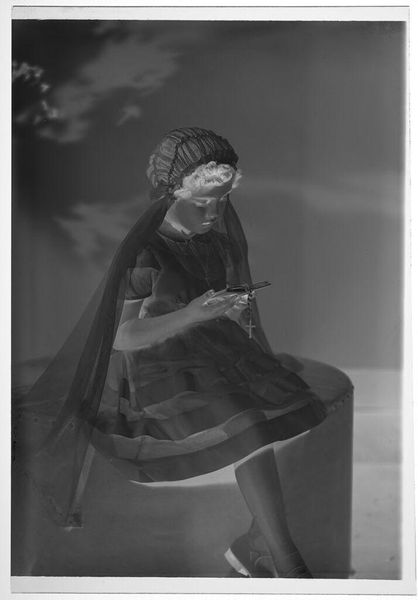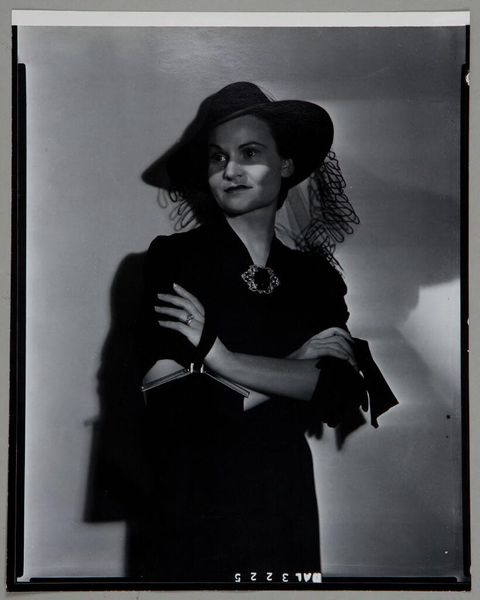
photography, gelatin-silver-print
#
portrait
#
art-deco
#
black and white format
#
charcoal drawing
#
photography
#
black and white
#
gelatin-silver-print
Dimensions: image/sheet: 38.8 × 26.6 cm (15 1/4 × 10 1/2 in.)
Copyright: National Gallery of Art: CC0 1.0
Curator: Here we have Annelise Kretschmer’s gelatin silver print, "Kostümaufnahme (Women's Suit)" from 1929. What are your first thoughts? Editor: Stark, and undeniably glamorous. The textures and the high contrast really draw the eye. There’s a tension between the soft feather boa and the more severe lines of her dress and hat. Curator: Absolutely. The composition is interesting; the subject is rigidly centered and almost pinned by light against a blank wall. Let's consider the context: Kretschmer was a prominent photographer during the Weimar Republic. The ‘New Woman’ was a prevalent social and cultural figure. To what extent does this photo serve that idea? Editor: Certainly, the androgynous styling plays into the Weimar fascination with gender fluidity, but her body language complicates things. Despite the confident suit, she stands with a contained stillness. Is it strength or submission? Perhaps both, reflecting the lived complexities facing women at the time. Curator: Precisely. Her gaze behind the lace veil, for example, could signal defiance, yet the shadow emphasizes her obscured expression. Considering photography's rising status during this period, Kretschmer may have consciously been testing what it means to create an "icon" or the very concept of ideal womanhood in flux. Editor: It's all rather performative isn’t it? This isn't necessarily a real woman, but a figure of style, captured by sharp photographic contrasts: hard and soft, light and shadow. It all points to her status as a designed, consciously constructed artifice, rather than someone "natural" as portraiture aimed for traditionally. Curator: A very astute observation. So then, even the photographic technique, with its high contrast and stark staging, serves not just to depict but to perform a certain visual and social rhetoric? Editor: Exactly! The high-contrast tones, stark lighting, and the unusual stylization all speak to an artistic intent that pushes beyond conventional representation. The interplay of textures—lace, feathers, silk, glossy flooring— creates a rich visual experience. It’s visually magnetic, I think. Curator: I agree. This image encapsulates so many aspects of its era. Its focus on modernism, performance of identity, and of course the rapidly shifting dynamics within Weimar society. Editor: It’s definitely given me a lot to think about. A deceptively simple photograph revealing a lot of complexity when we sit with it.
Comments
No comments
Be the first to comment and join the conversation on the ultimate creative platform.
